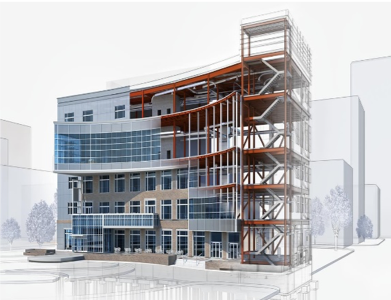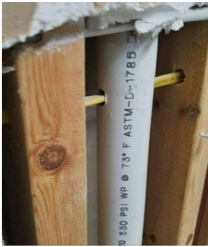The Benefits of BIM in Design and Construction
Building Information Modeling, commonly referred to as BIM, is quickly displacing traditional CAD as the standard for building design. BIM is not 3D CAD but an intelligent digital representation of both the physical and functional properties of a building, combining the best of CAD with underlying Databases to automate and simplify numerous aspects of the design process. This virtual combination of the physical and functional elements allow for increased construction efficiencies, reducing down time and construction waste across the entire life cycle of a structure.
Design and Construction without the use of BIM is encumbered with administrative and scheduling burdens that are challenging, or in some cases impossible, to overcome. Maintaining constant clear communication between trades is paramount and can make or break a project meeting its completion date on time and on or under budget. The greater the scope or scale of a project the more difficult constant coordination becomes. When communication breaks down and plans get out of sync, time and materials can be wasted requiring installers to go back and modify, or completely dismantle and replace, what was thought to be completed work.
BIM takes communication into consideration and handles the administration of plans and discussion between project stakeholders and teams. Changes made on the architectural model are seen in real-time by the Structural, MEP, and other trades without having to check distribution lists for updates. Additionally, built in communication such as the included chat system make even geographically isolated teams work as effectively as if they were in the same room coordinating around a drafting table.
The image on the left is perhaps a more extreme example of what happens when coordination fails. Ideally, the Trades are all working off of the same version of the plans and become aware of conflicting services before a situation like this occurs. However, as projects become more involved and more systems are incorporated conflicts are all but guaranteed, leading to significant project slowdowns. BIM finds these clashing services and notifies affected parties early in the design process meaning that these situations are addressed well before the construction begins.
 For General Contractors, Specialty Firestop Contractors, or any Trade performing Firestop work BIM provides added benefits on even a day to day basis. As changes are made that impact the building’s Fire Life Safety Plan, BIM Operators are notified allowing them to more accurately modify schedules or adjust material orders prior to applicators making their way out to the jobsite. Previously, these last minute changes that may convert a Smoke Barrier into a Fire-Wall or Smoke Partition may be missed until the next Coordination meeting. This type of after the fact update could mean removal and reapplication of previously installed Firestopping resulting in lost time and material, a delay and expense that is easily avoided when using BIM.
For General Contractors, Specialty Firestop Contractors, or any Trade performing Firestop work BIM provides added benefits on even a day to day basis. As changes are made that impact the building’s Fire Life Safety Plan, BIM Operators are notified allowing them to more accurately modify schedules or adjust material orders prior to applicators making their way out to the jobsite. Previously, these last minute changes that may convert a Smoke Barrier into a Fire-Wall or Smoke Partition may be missed until the next Coordination meeting. This type of after the fact update could mean removal and reapplication of previously installed Firestopping resulting in lost time and material, a delay and expense that is easily avoided when using BIM.
BIM’s constant coordination and transparency significantly reduces the need for meetings, E-Mail correspondence, or relying on third party syncing solutions to distribute updates to building plans. With proper implementation, installers can more accurately determine what and when materials will be needed on site even when working around site imposed design changes. Most importantly these increased efficiencies and foresight are gained without being encumbered with additional administrative overhead or time investment.


























